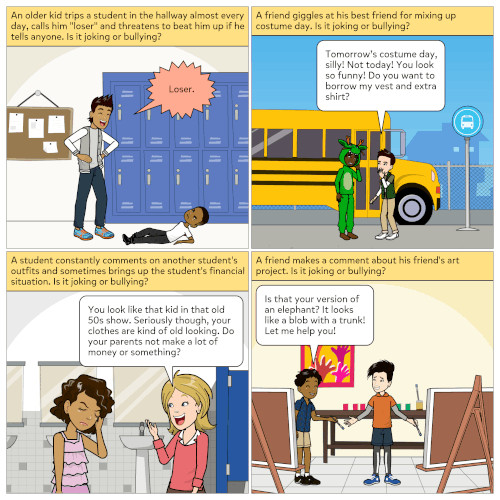As an educator and curriculum content creator, I’m always seeking to develop lessons that offer students opportunities to express complex emotions and share personal experiences. Inspiring self-expression and building a safe communal space begin with authentically exploring social-emotional learning (SEL) content.
Students are always navigating developmentally appropriate mental health and emotional-regulation growth, but today’s students are also coping with the effects of the pandemic. We cannot deprioritize SEL in our school spaces, and the great news is that we’re seeing significant investment and support for SEL. District spending on SEL on SEL programming grew about 45% between the 2019-20 and 2020-21 academic years, from $530 million to $765 million. When administrators and teachers were asked in a survey to rank their top priorities before and during the pandemic, improving students’ mental health and promoting students’ social-emotional competence rose to the number 1 and 2 priorities.
Currently, the grander concern for most educators in the classroom is the overwhelming “how.” Despite having a greater budget and public support for SEL, many teachers are unprepared to incorporate SEL into their instruction. Barriers include insufficient planning time, lack of parental consent, or lack of comprehensive SEL training for educators.
In my personal experience, collaborating with 4th- and 5th-graders, I find that my students struggle with expressing vulnerability or exploring emotional complexities. The feelings that arise from authentic SEL dialogue can be triggering if not polarizing when skills have not been scaffolded, because we have not given students enough opportunities to process the content in ways that feel authentic and meaningful to them. My solution: creating comics.
Comics build students’ academic self-esteem.
Using comics as a tool to integrate SEL into the content of the classroom opens the door for self-exploration with a creative advantage. Creating comics encourages students to engage in higher-order thinking such as evaluating content and synthesizing ideas with tools that help process their thinking. Comics can also be an enjoyable way for educators to scaffold these challenging SEL concepts.
Cognitive processing is generally more fun for students when it’s artistic. For those students who want to participate in this artistic expression but may feel overwhelmed by their creative limitations, using a comic-building platform such as Pixton makes the activity much more approachable. Working with existing backgrounds and characters frees them to focus more on the specific SEL/content tasks and less on comparing the production value of their comics with that of their peers.
Comics make learning fun again.
I realize that teaching SEL can ask students to be vulnerable. Lively comics give them the
confidence to express vulnerability, curbing insecurities. The facial expressions within Pixton’s visual library convey a wide range of emotions, which enables students to define and show how they’re feeling. Creating comics allows some students to explore their self-expression. Others may choose to use fictional characters to discuss challenging topics or dive deeper into students’ vulnerable conversations, including post-pandemic trauma, anti-racism, and inclusion.
Comics connect academic content of the classroom to SEL.
SEL shouldn’t stand alone as separate content. Instead, it should be woven into all subjects. For example, I’m working with students to create informational or fictional work products to process and show comprehension in literacy. These assignments also incorporate a reflective emotional component, asking questions that connect students to the characters and the plot experiences.
I ask questions such as, “If you were in this situation, what would you do to ask for help?” or “Would you have expressed yourself differently in this plot scenario? How?” Interlacing an empathetic approach to academic content using comics allows students to create a fictional narrative with expressive and lively opportunities.
Comics are a multi-purpose tool that saves teachers time.
I know SEL is a priority, but trying to incorporate it meaningfully can feel unrealistic when so many teachers feel pressure to focus on learning loss right now. Comics are a great way to provide visual lessons to frontload SEL concepts, or to serve as reflection tools for students. They can be used for explicit instruction or small-group work.
Comic creation is an underutilized tool that can be used in any number of ways, in any number of content areas—and the more you use it, the less work it is to manage. Students are immediately engaged in the learning, and I have found, exhibit far fewer disruptive behaviors. And students are excited to share their creations with parents and caregivers, creating a bridge between classroom and home, which is critical for meaningful SEL gains.
Encouraging dialogue about social-emotional and mental health is already a serious and often daunting endeavor for educators. Using comics can make the discussion welcoming and successful for diverse learners.
- Enhancing media literacy skills in the age of AI - November 8, 2024
- Trump has won a second term–here’s what that means for schools - November 7, 2024
- The four promises of school: Building a future-focused, student-centered learning environment - November 6, 2024


